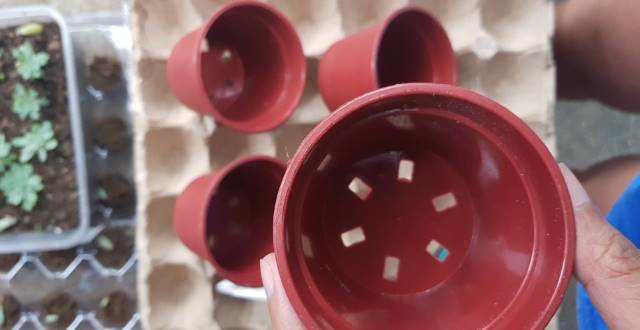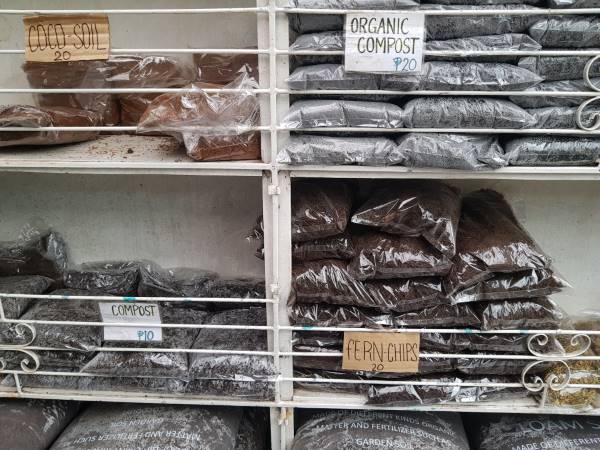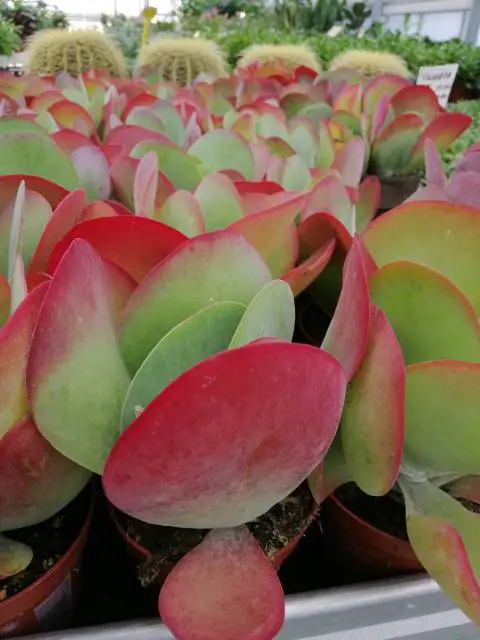Kalanchoe humilis is a large shrub succulent. It is an annual easy to care for Kalanchoe succulent that is excellent for beginners. Kalanchoe humilis has a striking appearance its green leaves are variegated with maroon or purple spots. It displays bright colors under the full sun. This succulent grows well in rock gardens and container gardens. The variegated leaves of Kalanchoe humilis give an amazing display to indoor and outdoor succulent gardens. The flowers of Kalanchoe humilis attract hummingbirds to your outdoor gardens.
Synonym: Kalanchoe prasine
Origin and Habitat
Kalanchoe humilis is native to Tanzania, Malawi, and Mozambique. It grows well in rocks and crevices on rocky islands and river falls.
How does Kalanchoe humilis look like?
Kalanchoe humilis is a spectacular succulent with an attractive and unique appearance. It grows up to 3 feet (90 cm) tall. The stems are woody at the base, simple or with a few branches, purple or slightly glaucous.
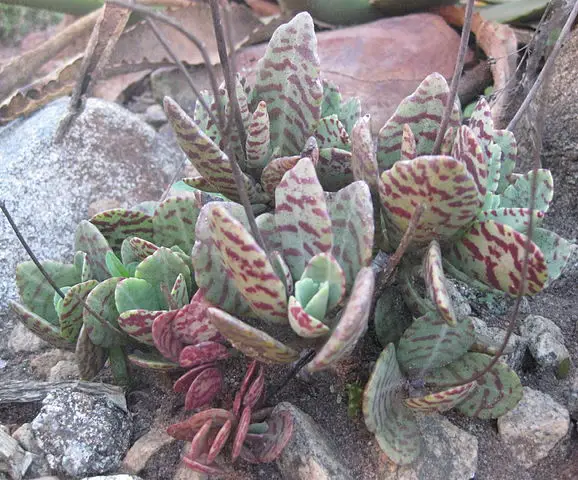
The stem usually grows up to 8 inches (20 cm) tall. Leaves are egg-shaped, pale green beautifully variegated with maroon or purple spots. Leaves are 5.2 inches (13 cm) long, and 2.4 inches (6 cm) wide. The leaves are arranged in an upright rosette. Kalanchoe humilis have glaucous blooms on both sides with rounded toothed margins. Flowers are tiny, purple to green that appears on erect, branched 14 inches long inflorescence.
Blooming season
Kalanchoe humilis blooms in the mid-summer season giving off beautifully colored flowers.
Is Kalanchoe humilis an outdoor or indoor succulent?
Kalanchoe humilis can be planted in outdoor and indoor conditions. During summer, you can keep your potted Kalanchoes outdoors to enjoy the sunlight, while, during winter when the temperature is low, they should be grown as indoor succulents.
How to Grow and Care for Kalanchoe humilis?
Kalanchoe humilis is super easy to grow and maintain. It can tolerate a period of neglect.
Keep reading to learn how to care for Kalanchoe humilis.
Light requirements
Light is one of the most critical needs of Kalanchoes humilis. It thrives best in bright sunny places. The outdoor succulents can be grown under full sun to partial shade. When the summer is extremely hot, and the sun is too intense it is advised to grow your Kalanchoe succulents in partial shade.
The indoor Kalanchoe succulents should be placed beside bright sunny windows for ample of sunlight exposure. Avoid direct contact of your succulents with the windows in summer, when the temperature is too hot it may cause the sunscald or burning of leaves.
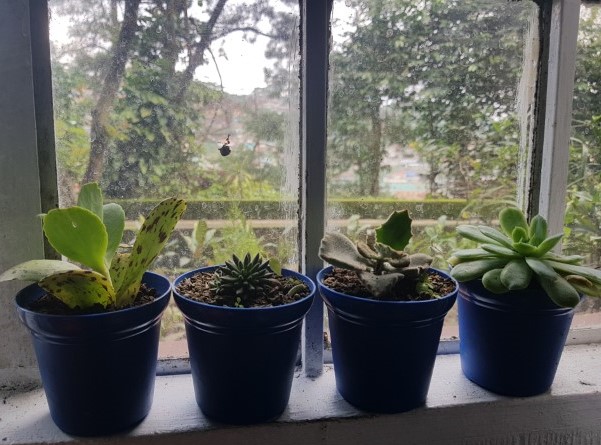
If your succulents start growing abnormally tall and appear leggy or stretched out, it indicates that your succulents are not getting enough sunlight. Try to move your succulents near a bright sunny window.
Potting soil
Kalanchoe humilis should be grown in a well-draining soil mix. You can use a standard succulent soil mix readily available in the market or you can prepare a potting medium on your own by mixing 40 to 50% sand or grit with peat moss.
Avoid using a potting medium that is too clayey. It lacks the porosity to let the excess water drain ultimately the water will accumulate in the soil causing root decay.
Temperature and humidity
Kalanchoe humilis thrives best at warm temperatures and cannot tolerate below-freezing temperatures. The minimum temperature it can tolerate is 10° F. If the temperature drops below 10° F, it will cause freezing injury. A few hours of exposure to below freezing temperatures is enough to cause the death of succulents. Bring the potted Kalanchoes indoors when the temperature drops below freezing.
They don’t require specific humidity and can generally take all levels of humidity.
.
USDA hardiness zones
Kalanchoe humilis is grown as a hardy succulent in USDA hardiness zones 8a (10 ° F) to 10b (40 ° F).
Watering
Kalanchoe humilis is a drought-smart plant that can tolerate a period of neglect. They need to be watered more often during the summer season, while less often during winter. Water your succulents well and let the excess water drain. Always wait between watering to let the soil dry out completely.
Insert your finger in the soil if the top 1 to 2 inches feel dry, it is time to water your succulents.
Overwatering is the worst enemy of Kalanchoe succulents. It causes rotting and disintegrations of the roots and also increases the chances of fungal growth.
Propagation
Kalanchoe humilis can be propagated easily by offsets, leaf, and stem cuttings. It can also be propagated using seeds. But seed propagation is slightly different and requires a bit of expertise.
To take the cuttings use a clean scissor or gardening shears. Cut the desired part carefully. Kalanchoe humilis produces small rosette offsets. To propagate from offsets cut the offsets from the main stem with a sharp scissor. Let the cuttings and offsets sit at a warm dry place for 2 to 3 days to develop callous.

Place the cuttings on the top of the pre-moistened potting soil. Keep misting the cuttings 5 to 6 times a day regularly to keep the soil evenly moist.
Put the pots near a bright sunny window. Don’t expose your succulents to direct bright sunlight until they establish in the soil. Kalanchoe humilis will start rooting after 2 to 3 weeks and will be ready for transplantation into new containers.
Repotting
Kalanchoe humilis does not require repotting very often. It can survive in the same container for years. However, a general rule is to repot all Kalanchoe succulents every 2 years, it will provide fertile potting soil to the succulents with a nutrient boost.
Fertilization
Kalanchoe humilis doesn’t require fertilization. It gets plenty of nutrients from the potting medium. However, fertilization will provide an extra dose of nutrients to your succulents. You can use a balanced fertilizer to fertilize your succulents biweekly or monthly.
Pruning
Kalanchoe humilis doesn’t require pruning and grooming. However, you can remove the spent blooms and dead leaves to encourage better growth next season.
Problems
Kalanchoe humilis is quite tolerant to insect pests. You can occasionally find Mealybugs and aphids attacking the indoor succulents. You can use 70% alcohol or neem oil to get rid of these creepy bugs. In case of severe infestation, you can use a non-toxic insecticide spray.
Another problem of Kalanchoe humilis is overwatering. Water your plants moderately and avoid overwatering.
Uses
Kalanchoe humilis is a desirable ornamental succulent at bright sunny locations. It looks beautiful in succulent gardens and landscaping and at frost-free locations.
See our list of different types of Kalanchoes here:
https://kalanchoe-succulent.com/types-of-kalanchoe/

